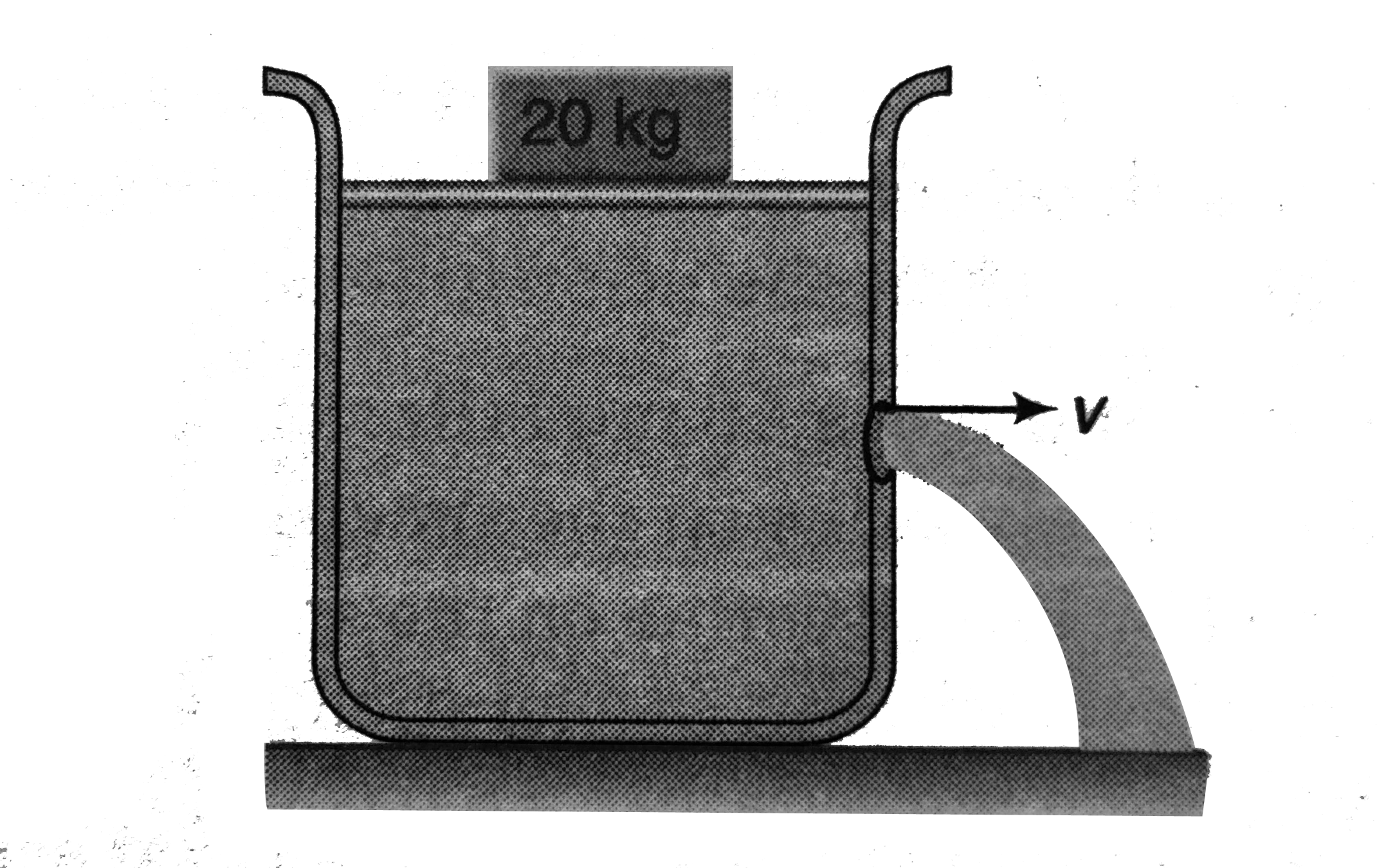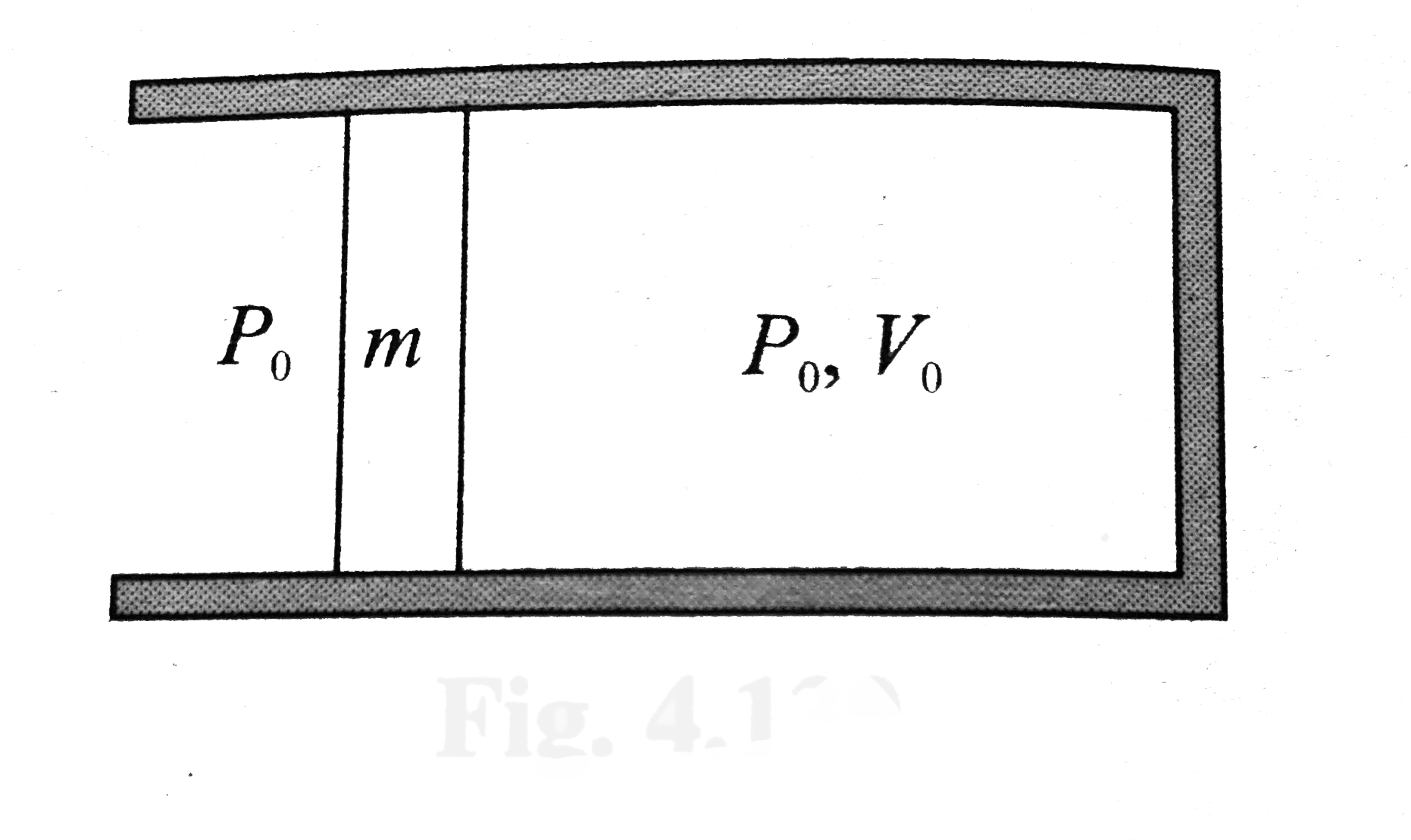A cylinderical jar of cross-sectional area of 50cm2 is filled with water to a height of 20cm. It carries a tight fitting piston of negligible mass. Calculate the pressure at the bottom of the jar when a mass of 1kg is placed on the piston . Ignore atmospheric pressure.
The correct Answer is:(3920Nm−2)
To solve the problem, we need to calculate the pressure at the bottom of the cylindrical jar when a mass of 1 kg is placed on the piston. We will follow these steps:
Step 1: Calculate the force exerted by the piston
The force exerted by the piston can be calculated using the formula:
F=m⋅g
Where:
- m=1kg (mass placed on the piston)
- g=9.8m/s2 (acceleration due to gravity)
Calculating the force:
F=1kg⋅9.8m/s2=9.8N
Step 2: Calculate the area of the piston in square meters
The area of the piston is given as 50cm2. We need to convert this to square meters:
A=50cm2=50×10−4m2=0.005m2
Step 3: Calculate the pressure due to the piston
Pressure is defined as force per unit area:
Ppiston=FA
Substituting the values:
Ppiston=9.8N0.005m2=1960Pa
Step 4: Calculate the pressure due to the water column
The pressure due to the water column can be calculated using the formula:
Pwater=ρ⋅g⋅h
Where:
- ρ=1000kg/m3 (density of water)
- g=9.8m/s2 (acceleration due to gravity)
- h=20cm=0.2m (height of the water column)
Calculating the pressure:
Pwater=1000kg/m3⋅9.8m/s2⋅0.2m=1960Pa
Step 5: Calculate the total pressure at the bottom of the jar
The total pressure at the bottom of the jar is the sum of the pressure due to the piston and the pressure due to the water column:
Ptotal=Ppiston+Pwater
Substituting the values:
Ptotal=1960Pa+1960Pa=3920Pa
Final Answer
The pressure at the bottom of the jar when a mass of 1 kg is placed on the piston is:
Ptotal=3920Pa
---
The force exerted by the piston can be calculated using the formula:
F=m⋅g
Where:
- m=1kg (mass placed on the piston)
- g=9.8m/s2 (acceleration due to gravity)
F=1kg⋅9.8m/s2=9.8N
The area of the piston is given as 50cm2. We need to convert this to square meters:
A=50cm2=50×10−4m2=0.005m2
Pressure is defined as force per unit area:
Ppiston=FA
Substituting the values:
Ppiston=9.8N0.005m2=1960Pa
The pressure due to the water column can be calculated using the formula:
Pwater=ρ⋅g⋅h
Where:
- ρ=1000kg/m3 (density of water)
- g=9.8m/s2 (acceleration due to gravity)
- h=20cm=0.2m (height of the water column)
Pwater=1000kg/m3⋅9.8m/s2⋅0.2m=1960Pa
The total pressure at the bottom of the jar is the sum of the pressure due to the piston and the pressure due to the water column:
Ptotal=Ppiston+Pwater
Substituting the values:
Ptotal=1960Pa+1960Pa=3920Pa
The pressure at the bottom of the jar when a mass of 1 kg is placed on the piston is:
Ptotal=3920Pa
Similar Questions
A hydraulic automobile life is designed to lift cars with a maximum mass of 3000 kg. The area of cross section of the piston carrying the load is 425 cm^2 .What maximum pressure would the smaller piston have to eat?
View SolutionA hydraulic automobile life is designed to lift cars with a maximum mass of 3000 kg. The area of cross section of the piston carrying the load is 425 cm^2 .What maximum pressure would the smaller piston have to eat?
View SolutionA hydraulic automobile life is designed to lift cars with a maximum mass of 3000 kg. The area of cross section of the piston carrying the load is 425 cm^2 .What maximum pressure would the smaller piston have to eat?
View SolutionA hydraulic automobile life is designed to lift cars with a maximum mass of 3000 kg. The area of cross section of the piston carrying the load is 425 cm^2 .What maximum pressure would the smaller piston have to eat?
View SolutionA long cylindrical tank of cross-sectional area 0.5m2 is filled with water. It has a small hole at a height 50cm from the bottom. A movable piston of cross-sectional area almost equal to 0.5m2 is fitted on the top of the tank such that it can slide in the tank freely. A load of 20kg is applied on the top of the water by piston, as shown in the figure. Calculate the speed of the water jet with which it hits the surface when piston is 1m above the bottom. (Ignore the mass of the piston)

View SolutionA piston of cross-sectional area 100 cm^(2) is used in a hydraulic pressure to exert a force of 10^(7) dyne on the water. The cross-sectional area of the other piston which support a truck of mass 2000 kg is
View SolutionA hydraulic automobile lift is designed to lift cars with a maximum mass of 3000 kg. The area of cross-section of the piston carrying the load is 425 cm^(2). What maximum pressure would the small piston have to bear?
View SolutionA smooth piston of mass m area of cross - section A is in equilibrium in a gas jar when the pressure of the gas is P0. Find the angular frequency of oscillation of the piston, assuming adiabatic Change of state of the gas.

View Solution
